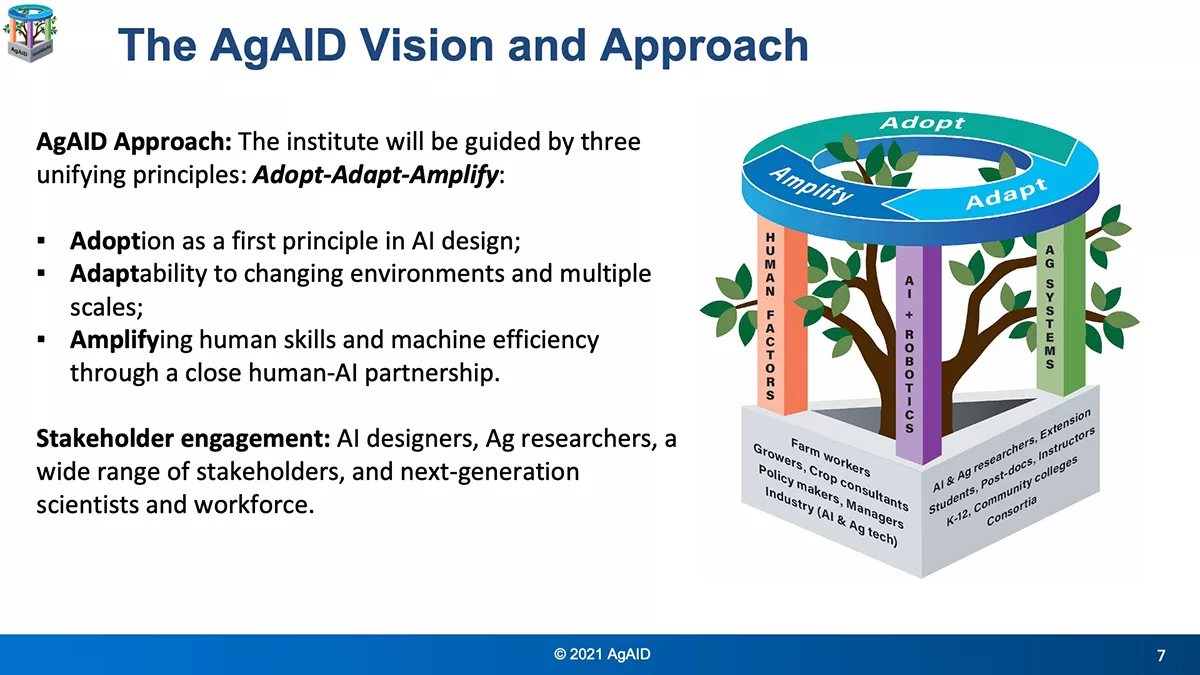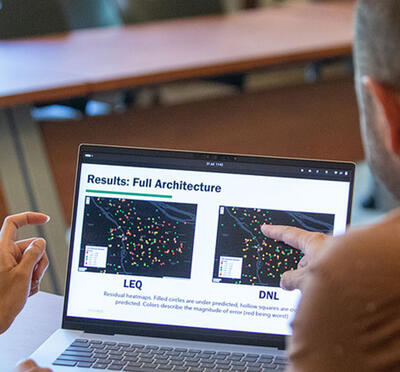The possibility of losing a crop to frost keeps farmers awake at night. Similarly, the decision to employ frost mitigation solutions, which can prevent crop loss from unseasonably cold temperatures, is also not taken lightly. Ranging in cost from hundreds of thousands of dollars up into the millions, the question “to mitigate or not?” is as much of a gamble as trying to predict the stock market.
The AgAID Institute, a powerful coalition of technology firms and universities, including Oregon State University, is employing artificial intelligence to tackle some of the most important and difficult problems facing farmers today. The frost mitigation issue is just one of several groundbreaking projects getting focus at the new institute, where the building of a neural network to forecast the hardiness of grapes, model water and soil conditions, and best predict whether mitigation techniques should be employed before harvest, is helping farmers avoid crop loss and get that all-important sleep at night.
Formed in the 2020-21 cycle and funded via a research grant from the National Institute of Food and Agriculture in partnership with the National Science Foundation, AgAID consists of ten core members featuring Washington State University and the University of California Merced at the helm of agricultural research, Oregon State’s schools of Electrical Engineering and Computer Science and Mechanical, Industrial, and Manufacturing Engineering, and the University of Virginia as co-managers of the AI component.
So what’s the big goal?
The goal of the AgAID Institute is to solve complex problems for farmers, specifically to help them secure a future in food production. Unlike big corn, wheat, and other mega-tract farming operations more commonly seen in the Midwest, the Northwest region features a wide variety of what are known as “specialty crops,” such as nuts, grapes, cherries, apples, and strawberries. Making up 85% of the market value of food grown in the U.S., it’s these specialty crops that AgAID is focused on providing solutions for.
An ever-increasing population, which naturally drives the demand for food, along with changing climates that make the weather more extreme and unpredictable, are just part of the challenge. Adding in the increasing scarcity of water and its tricky political elements, along with a shortage of both skilled and unskilled labor, it’s no wonder that farmers need help.

As one of only two out of 40 agriculturally related grant submissions to secure funding from the National Institute of Food and Agriculture, AgAID is happily stepping in to work in this vital role, and there are plans for Oregon State’s College of Agricultural Sciences to become involved. AgAID seeks to expand its partnerships and reach, looking to go well beyond the five years of funding secured to date. Our population needs food, and the more affordable, the better. Finding ways to automate the monotonous tasks, better manage harvesting to reduce waste and crop damage, and better predict issues like early frosts and poor seed quality can only help the cause.
How farming problems are engaged
As AgAID engages a new problem, it is first evaluated on a human level. The time for coding AI solutions comes well after initial time is spent simply talking to farmers about what issues they face. From plant hardiness to robotic harvesting solutions to predicting the weather and availability of water, many factors range widely in terms of data integrity and model efficacy.
Once a problem that needs attention is well understood, it is then attacked from three different perspectives: complex system modeling, the human-AI partnership (which means just precisely how the farmer will use the AI system), and finally, how easily adopted and expandable the AI is for those who are using it.

See the AgAID Tech Talk by Alan Fern
Take a look at this informative and inspiring Tech Talk about AgAID given by Oregon State University’s Alan Fern, professor of computer science. Fern was one of the lead grant writers for AgAID and is an active institute member involved in several of its core projects.
Selected Technical Papers from AgAID
- Ananth Kalyanaraman, Margaret Burnett, Alan Fern, Lav Knot, and Joshua Viers. (2022). Special Report: The AgAID AI Institute for Transforming Workforce and Decision Support in Agriculture. Computers and Electronics in Agriculture.
- Aseem Saxena, Paola Pesantez-Cabrera, Rohan Ballapragada, Kin-Ho Lam, Markus Keller, and Alan Fern. (to appear). Grape Cold-Hardiness Prediction via Multi-Task Learning. Conference on Innovative Applications of Artificial Intelligence (IAAI-2023). Preprint
- A. You, C. Grimm, A. Silwal, J.R. Davidson, "Semantics-guided skeletonization of upright fruiting offshoot trees for robotic pruning," in Computers and Electronics in Agriculture, vol. 192, Article 106622, 2022.
If you’re interested in connecting with the AI and Robotics Program for hiring and collaborative projects, please contact AI-OSU@oregonstate.edu.
Subscribe to AI @ Oregon State



